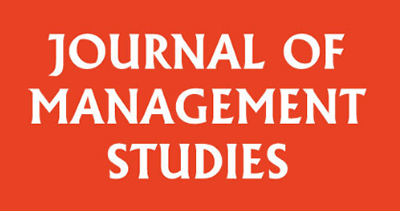
Always connected, but at what cost? How smartphone use at work influences work performance
Summary
Remote and hybrid work have become the new normal, and both employees and organizations are experiencing the effects of constant connectivity. While using smartphones at work can enhance productivity by fostering certain positive values, it can also diminish work performance by disrupting work-life balance. The negative impacts of constant connectivity are especially pronounced during crises. Therefore, it is essential for employees and organizations to understand how to leverage the benefits of smartphone use at work while mitigating its risks.
Working in an era of constant connectivity
Smartphones have transformed our daily lives by enabling us to stay connected not only with colleagues and clients but also with family and friends while at work. There are several benefits to smartphone use, as it helps us balance work and family demands and manage the boundaries between them. However, this blurring of lines between professional and personal domains can create additional pressure on employees. For instance, the “always on” mentality may lead to a sense of urgency to respond quickly to both work-related and personal messages, which can disrupt our focus on actual tasks. Therefore, our research explores whether the “always on” mentality positively or negatively affects our work performance.
Constant connectivity: neither black nor white?
When examining the effects of constant connectivity on work performance, it becomes clear that a nuanced perspective is essential. This perspective considers various aspects, such as different types of work performance and how constant connectivity has evolved over time – particularly during periods of crises compared to non-crisis times. This research specifically compares connectivity in non-crisis situations to major disruptions, such as the COVID-19 pandemic. Additionally, it distinguishes between two types of work performance: Generic Task Performance, which measures how effectively employees complete their usual tasks, and Adaptive Performance, which assesses how well employees adjust to new challenges and changes.
The double-edged sword effect of constant connectivity: Key findings
Our cross-cultural study, conducted in France and the UK, revealed that smartphone use can directly influence different aspects of work performance, but the situation is more nuanced. We found that as smartphones blur the boundaries between work and home life, it becomes more challenging to maintain a healthy balance, which can ultimately harm performance. Additionally, employees assign different values to smartphone usage at work, and these values variably impact their performance. While utilitarian value (i.e., using smartphones to accomplish tasks) can enhance both types of work performance, hedonic value (i.e., using smartphones for fun or distraction) tends to decrease performance, particularly in generic task performance. Most importantly, comparing smartphone use at work during non-crisis and crisis periods shows that constant connectivity particularly negatively affects work performance in times of major disruptions.
The double-edged sword effect of constant connectivity: Implications beyond academia
The constant connectivity provided by smartphones presents a double-edged sword, making it essential for organizations and employees to understand both the advantages and disadvantages of smartphone use at work. The first step in addressing this issue is raising general awareness to maximize the benefits associated with smartphone use while also mitigating its risks. This involves organizations clearly defining what constitutes appropriate smartphone use in the workplace. For instance, implementing clear usage guidelines and offering employee training can help individuals self-monitor their smartphone habits. When organizations assist employees in navigating the boundaries between their professional and personal lives, smartphone use can become a valuable tool at work.
In addition to establishing guidelines and raising awareness, employees can benefit from easy-to-use business applications that help them manage their communications, as well as social platforms that foster team spirit in remote settings. Furthermore, organizations can conduct surveys to identify new features or applications beneficial to enhance employees’ work performance and improve their work-life balance.
It is also crucial for organizations and employees to implement mechanisms that ensure constant connectivity is carefully reviewed over time. This includes not only monitoring constant connectivity in times of global crises, such as the COVID-19 pandemic or economic downturns, but also individual crises that employees may face. Therefore, continuous monitoring of smartphone use at work is essential.
In summary, by understanding the double-edged sword effect of constant connectivity and taking proactive steps to maximize its benefits while minimizing its risks, we can create healthier and more productive workplaces for the future.

0 Comments